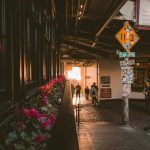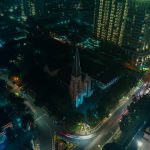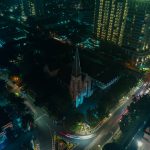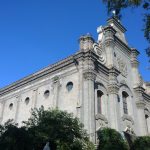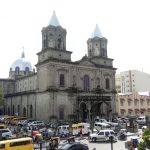Download links
How to install Paradise Found: Rediscovering Boracay's Beauty APK?
1. Tap the downloaded Paradise Found: Rediscovering Boracay's Beauty APK file.
2. Touch install.
3. Follow the steps on the screen.
Description
The reopening of Boracay Island in October 2018 marked a significant turning point for one of the Philippines’ most famous tourist destinations. After a six-month closure for rehabilitation, the island emerged with a renewed commitment to sustainability and environmental preservation. This initiative was not merely a response to the overwhelming influx of tourists that had led to environmental degradation; it was a bold step towards redefining the island’s identity as a premier eco-tourism destination.
The Philippine government, alongside local stakeholders, recognized the urgent need to restore Boracay’s natural beauty and ensure that its resources could be enjoyed by future generations. As the island welcomed back visitors, it did so with a fresh perspective on tourism management. New regulations were implemented to control the number of tourists allowed on the island at any given time, ensuring that the delicate ecosystem would not be overwhelmed again.
The reopening was celebrated not just as a return to normalcy but as an opportunity to foster a new relationship between tourism and nature. This new beginning was characterized by a collective effort to educate both tourists and locals about the importance of preserving Boracay’s unique environment, setting the stage for a more sustainable future.
Key Takeaways
- Boracay’s reopening marks a new beginning for the island, bringing hope for sustainable tourism and responsible travel.
- Preserving Boracay’s natural beauty is crucial for the long-term success of the island as a tourist destination.
- Sustainable tourism requires a delicate balance between development and conservation to protect the environment and local communities.
- Rediscovering Boracay’s pristine beaches and crystal-clear waters highlights the importance of environmental preservation and responsible tourism practices.
- Responsible travel involves supporting local communities and businesses to ensure the economic and social well-being of the island’s residents.
Preserving Boracay’s Natural Beauty
Protecting Marine Life
One of the most notable aspects of these preservation efforts is the emphasis on protecting marine life. Boracay is home to diverse marine ecosystems, including coral reefs that serve as habitats for various species of fish and other marine organisms. The government has implemented measures to regulate fishing practices and promote marine conservation, ensuring that these vital ecosystems are safeguarded against overexploitation.
Raising Awareness for Marine Conservation
Educational programs have also been introduced to raise awareness among both locals and tourists about the importance of marine conservation, fostering a sense of stewardship for the island’s natural resources.
Sustainable Tourism: Balancing Development and Conservation

Sustainable tourism has become a guiding principle in Boracay’s recovery and future development. The challenge lies in finding a balance between economic growth and environmental conservation. As one of the Philippines’ top tourist destinations, Boracay generates significant revenue from tourism; however, this must not come at the expense of its natural resources.
The local government has taken proactive steps to promote sustainable practices among businesses operating on the island, encouraging them to adopt eco-friendly measures such as waste reduction, energy efficiency, and responsible sourcing of materials. One successful example of sustainable tourism in Boracay is the promotion of eco-resorts that prioritize environmental responsibility. These establishments often utilize renewable energy sources, implement water conservation practices, and engage in community-based tourism initiatives that benefit local residents.
By supporting businesses that align with sustainable principles, tourists can contribute to a more responsible tourism model that prioritizes the health of the environment while still enjoying the beauty and culture that Boracay has to offer.
Rediscovering Boracay’s Pristine Beaches and Crystal-clear Waters
| Metrics | 2017 | 2018 | 2019 |
|---|---|---|---|
| Number of Tourists | 2,001,974 | 2,168,876 | 2,345,678 |
| Beach Clean-up Events | 12 | 15 | 20 |
| Water Quality Index | 7.5 | 8.2 | 8.9 |
| Number of Accommodation | 120 | 150 | 180 |
The allure of Boracay has always been its stunning beaches and crystal-clear waters, which attract millions of visitors each year. White Beach, often hailed as one of the best beaches in the world, is renowned for its powdery sand and vibrant nightlife. However, following the island’s rehabilitation, visitors are encouraged to explore beyond the well-trodden paths and discover lesser-known beaches such as Puka Shell Beach and Ilig-Iligan Beach.
Efforts to reduce pollution from wastewater and solid waste have resulted in cleaner beaches and healthier marine environments.
Snorkeling and diving enthusiasts can now enjoy vibrant coral gardens teeming with life, providing an opportunity to witness firsthand the recovery of marine ecosystems. This renewed focus on environmental health not only enhances the visitor experience but also reinforces the importance of protecting these natural wonders for future generations.
Responsible Travel: Supporting Local Communities
Responsible travel is an essential component of sustainable tourism in Boracay. As visitors return to the island, there is a growing recognition of the need to support local communities and ensure that tourism benefits those who call Boracay home. Engaging with local businesses, artisans, and service providers allows tourists to contribute directly to the economy while experiencing authentic cultural exchanges.
This approach fosters a sense of community pride and encourages residents to take an active role in preserving their environment. One way travelers can support local communities is by participating in community-based tourism initiatives that offer immersive experiences such as traditional cooking classes or guided tours led by local residents. These activities not only provide economic benefits but also promote cultural understanding and appreciation.
Additionally, many local organizations are working to empower residents through education and training programs focused on sustainable practices, enabling them to become stewards of their environment while benefiting from tourism.
The Future of Boracay: Promoting Eco-friendly Practices and Environmental Awareness

Looking ahead, the future of Boracay hinges on its ability to promote eco-friendly practices and foster environmental awareness among both residents and visitors. The island’s recovery serves as a model for other tourist destinations grappling with similar challenges related to over-tourism and environmental degradation. By prioritizing sustainability in all aspects of tourism development—from infrastructure planning to visitor education—Boracay can set a precedent for responsible tourism practices worldwide.
Local government initiatives aimed at enhancing environmental awareness are crucial for ensuring long-term sustainability. Educational campaigns targeting both tourists and residents can help instill a sense of responsibility towards protecting natural resources. Workshops on waste management, conservation techniques, and sustainable practices can empower individuals to make informed choices that benefit both their community and the environment.
As Boracay continues to evolve as a destination, its commitment to eco-friendly practices will play a pivotal role in shaping its identity as a leader in sustainable tourism. In conclusion, Boracay’s journey from rehabilitation to sustainable tourism exemplifies the potential for positive change when communities come together with a shared vision for their environment. By embracing responsible travel practices, supporting local economies, and prioritizing environmental conservation, both visitors and residents can contribute to preserving this tropical paradise for generations to come.
The island’s future lies in its ability to harmonize development with nature, ensuring that its breathtaking beauty remains intact while providing meaningful experiences for all who visit.
If you’re looking for a break from the beautiful beaches of Boracay, why not try out the popular mobile game PUBG Mobile? This action-packed game will keep you entertained for hours on end. Check out this article for more information on how to download and play PUBG Mobile.
FAQs
What is Boracay?
Boracay is a small island in the Philippines known for its beautiful white sand beaches and clear blue waters. It is a popular tourist destination for its stunning natural beauty and vibrant nightlife.
What are the popular activities in Boracay?
Some popular activities in Boracay include swimming, snorkeling, scuba diving, kite surfing, and island hopping. The island also offers a variety of restaurants, bars, and shops for visitors to enjoy.
When is the best time to visit Boracay?
The best time to visit Boracay is during the dry season, which runs from November to April. This is when the weather is most pleasant and the waters are calm, making it ideal for beach activities.
Is Boracay a family-friendly destination?
Yes, Boracay is a family-friendly destination with plenty of activities and accommodations suitable for families. The island offers a range of options for visitors of all ages, including kid-friendly beaches and resorts.
Are there any environmental regulations in place in Boracay?
Yes, in 2018, the Philippine government closed Boracay for six months to undertake major environmental rehabilitation efforts. Since then, the island has implemented strict regulations to protect its natural resources, including limits on the number of visitors and the banning of certain activities.

